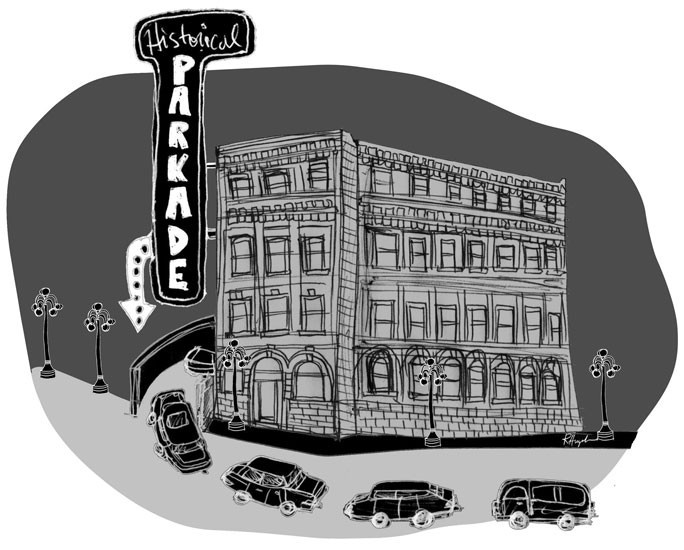The facade of mediocrity
Protecting the Exchange
The key to demolishing a building in the Exchange District today is patience.
For the Reiss family’s Bedford Investments company, it has taken more than 15 years of willful neglect to finally win approval to demolish the Ryan Block for a parkade. Keeping the facade (or simply talking about it) is simply becoming another method, and the City of Winnipeg is giving $1.5 million in municipal heritage grants to Bedford Developments to rebuild the facade of the 114-year-old warehouse and incorporate it into the parking structure.
Facade-retention is increasingly seen as a supposed “win-win,” but is really just an excuse for continuing to gradually thwart the vibrancy of the Exchange District by adding more to its over-saturated parking supply. Urban spaces are not simply a collection of nice facades propped up like movie sets, but living and dynamic organisms: at their best when they are dense and complex in their uses.
Located at the corner of King Street and Bannatyne Avenue, diagonal to Market Square, the Ryan Block is not standing in some windswept fringe of the neighborhood where investment carries a greater risk, but right at the heart. It would not be difficult to imagine a modish eatery lighting up the arched windows of the main floor with small firms or residents upstairs.
This kind of adaptability of space, that in the surrounding blocks has given new life to numerous century-old buildings, does not seem to be the Ryan Block owner’s strong suit. Shortly after furs began to shed (pun definitely intended) some of their status as a verboten fashion item, and as the surrounding blocks solidified as retailing destinations, Reiss Furs and Fine Fashion, (another of the family’s concerns down the street at McDermot), closed, citing changing consumer habits. Having never changed the teal green fur-lined ensemble worn by a mannequin in the window at any time over its last few years in business, it is hard to believe their demise was caused purely by market externalities.
Built in 1895, the Ryan Block is one of the older warehouses in the Exchange District and the first to be built in the Richardsonian Romanesque style. But to defend buildings on their historical and architectural significance only gets one so far: there are older buildings in the Exchange (like the Telegram Building built in 1882), and buildings that are more impressive evocations of the Richardsonian-Romanesque style (such as the monumental Gault and Ashdown warehouses) that could be argued are more important than the Ryan Block.
More than just the form, what must be understood and defended is the function that the buildings of the Exchange District serve. This is more important than age and ornamentation in creating a place that draws commerce and people. It is no accident that the busiest, most economically successful parts of the Exchange District are its most built up areas. The appeal is not just the character, but the density of relatively compact streetscapes that are largely devoid of massive surface parking lots and disastrously hostile Modernist designs.
A facade would still form a streetscape at King and Bannatyne, even if it is a dead one that failed to add anything to the neighborhood’s usefulness, but it is doubtful that Bedford Investment is willing or able to do even that. Holding them to a promise to build the facade in its true form, and learning from the mistake of allowing the demolition by neglect formula to go on in the city’s most vital neighborhood, is something that the city must now do.
Robert Galston blogs at riseandsprawl.blogspot.com.







